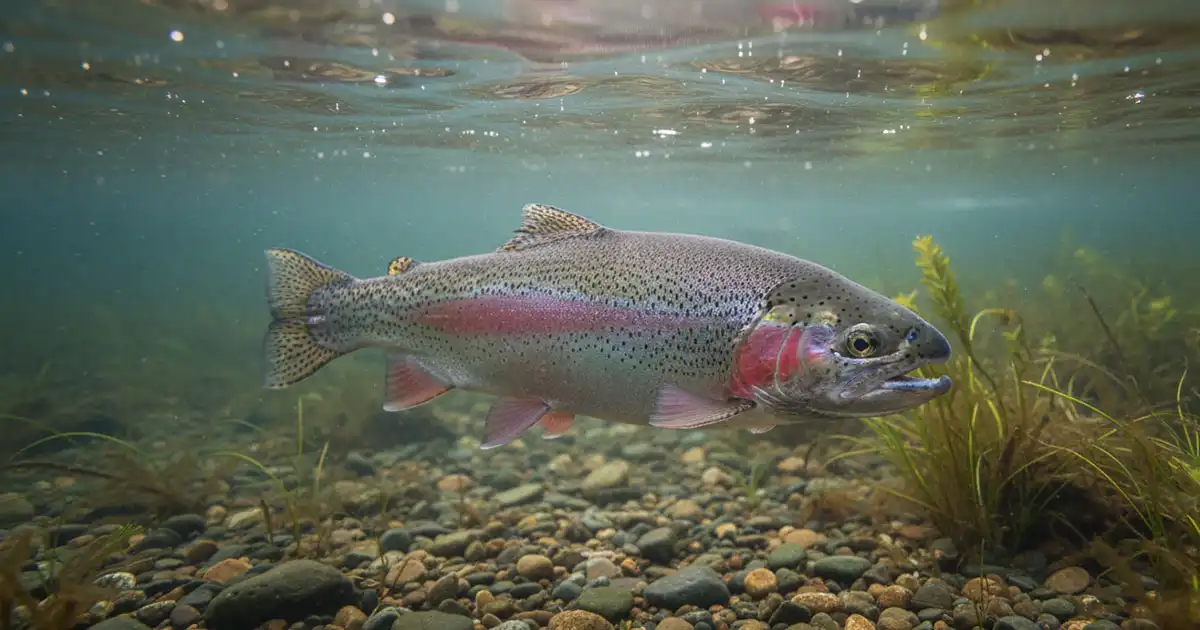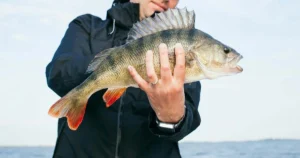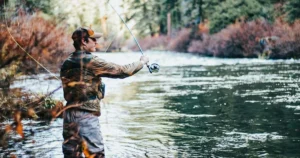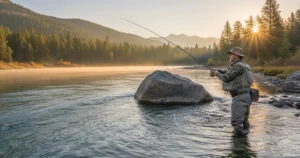How to Catch Rainbow Trout: Your Step-by-Step Guide
Table of Contents
Rainbow trout are one of the most popular and widespread trout species in the United States. They are known for their vibrant colors and acrobatic fights, making them a favorite target for anglers of all skill levels. If you want to know how to effectively catch rainbow trout, you’ve come to the right place. This guide will give you step-by-step instructions and expert tips to help you land your next big catch.
Step 1: Gear Up for Success
Before you even get to the water, having the right gear is non-negotiable. While you can catch a rainbow trout on a simple spin-casting combo, having the right setup will make your experience more enjoyable and successful.
The Right Rod and Reel
For rainbow trout, a light or ultralight spinning rod is an excellent choice. These rods are sensitive enough to detect the subtle bites of a trout and have the right “give” to handle their spirited runs.
- For Beginners: A best beginner fishing rod is an ultralight spinning rod from a reputable brand like Ugly Stik or Shakespeare.
- For More Experienced Anglers: A good quality spinning rod from one of the top fishing rod brands like St. Croix or Fenwick will provide the sensitivity and feel you need for a truly productive day.
- Line: You’ll want to use a light line, typically 4 to 6-pound test. This is crucial for stealth and for getting a natural presentation.
Lures and Baits
Rainbow trout are not picky eaters, but some baits and lures are more effective than others.
- Bait: PowerBait, salmon eggs, and nightcrawlers are all excellent choices, especially in stocked waters.
- Lures: Small spinners (e.g., Rooster Tail, Panther Martin), spoons (e.g., Kastmaster), and small jigs are all proven winners.
Step 2: Finding Rainbow Trout
Rainbow trout are a diverse species, and you can find them in a variety of environments, from fast-moving rivers to large, still-water lakes.
In Rivers and Streams
Rainbows love cool, oxygenated water. Look for them in:
- Riffles and Runs: These fast-moving sections are where rainbows will often feed on insects that are tumbling in the current.
- Deep Pools: Rainbows will retreat to deep pools for cover and to escape the heat of the day.
- Structure: Look for fallen trees, large rocks, and undercut banks. These are all prime hiding spots.
In Lakes and Ponds
In still water, you need a different approach to find the fish.
- Drop-Offs: The edge where a shallow bank drops into deeper water is a fantastic place to fish.
- Inlets and Outlets: The areas where a stream or river flows into or out of a lake are often cooler and more oxygenated.
- The Thermocline: In the summer, you’ll want to fish at the thermocline, which is the layer of water where the temperature changes rapidly. This is where the cool, oxygen-rich water is.
Step 3: Presenting Your Bait
This is where your technique comes into play. A natural presentation is what will convince a wary rainbow trout to bite.
- For Baits: Use a light sinker to get your bait down to the desired depth. You can either cast it out and let it sit on the bottom or suspend it under a bobber.
- For Lures: The “cast and retrieve” method is the standard. Cast your lure out and reel it back in at a steady pace. Vary your retrieve speed and add a few twitches to mimic an injured baitfish.
“Rainbow trout will often hit a lure or bait aggressively, so be ready to set the hook as soon as you feel a strike. They are known for their strong initial run!”
Key Takeaways
- Use light gear and line for a subtle and effective presentation.
- Target areas with cool, oxygenated water, such as riffles and deep pools.
- Vary your baits and lures until you find what the trout are biting on.
- Practice your presentation to ensure a natural drift or retrieve.
FAQ
Q: What are the best fishing poles for beginners? A: For beginners, a pre-packaged rod and reel combo is an excellent choice. Look for brands like Ugly Stik or Shakespeare. These are durable, affordable, and will allow you to learn the basics without a significant investment.
Q: What is a good brand fishing pole for saltwater? A: When you’re ready to tackle the ocean, you’ll need a different kind of rod. Some good brand fishing pole options for saltwater include Penn, Shimano, and Daiwa. These brands offer rods with the strength and corrosion resistance needed for a marine environment.
Q: What is the best time to fish for trout in a river? A: The best time to fish for trout in a river is during the early morning and late evening, especially in the warmer months. In the cooler seasons, midday can be productive as the water warms up.
Conclusion
Catching rainbow trout is a rewarding experience. By following these steps and understanding the basics of their behavior, you’ll be well-equipped to land one of these beautiful fish. Remember that patience and practice are your best friends in the world of fishing.







